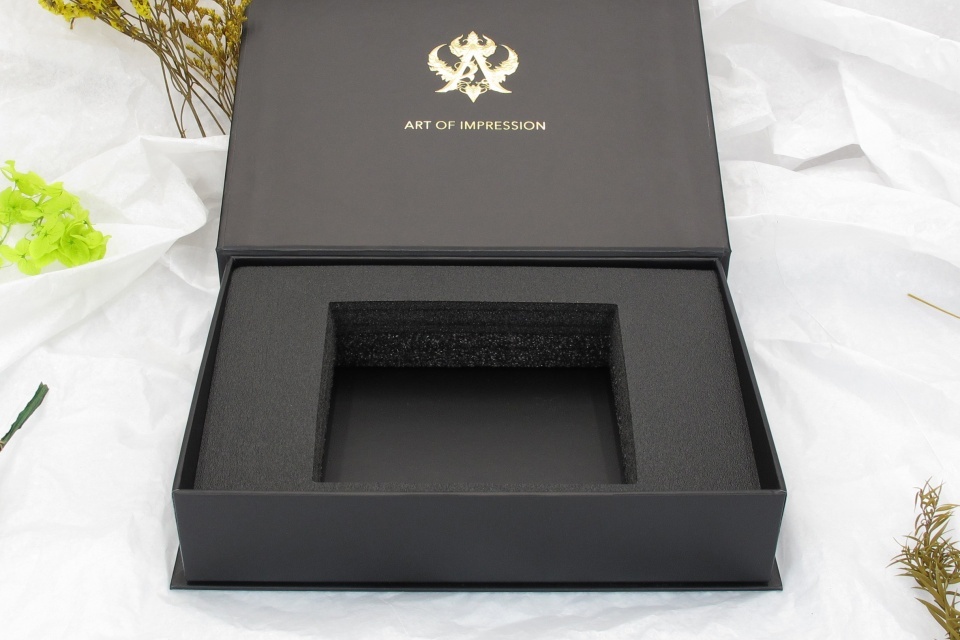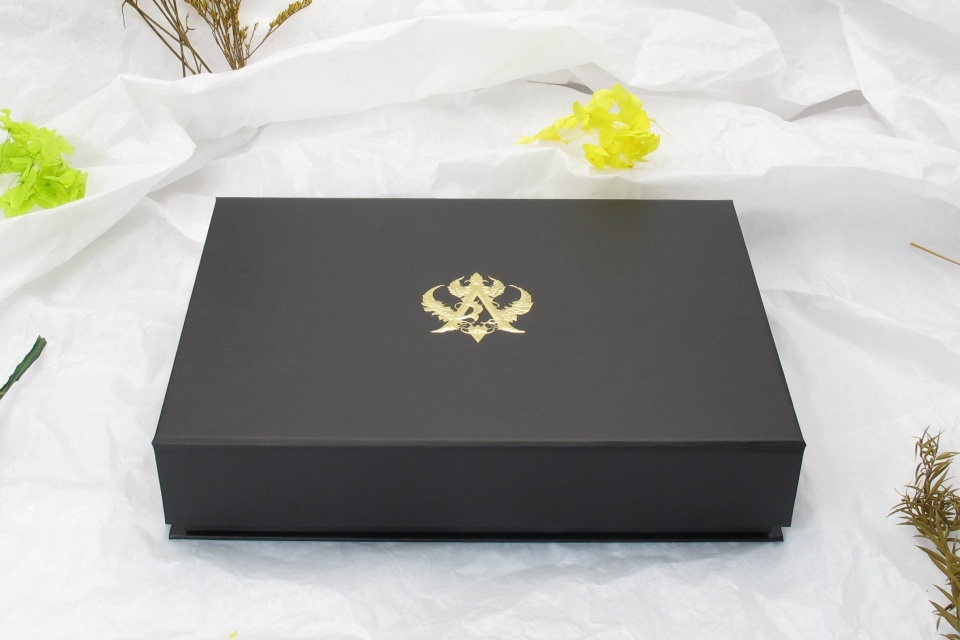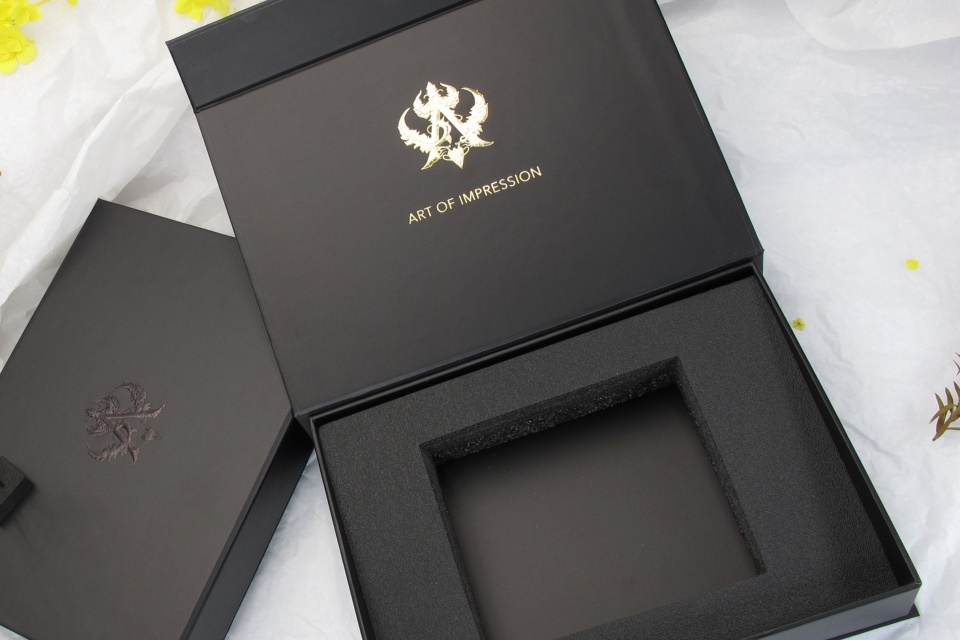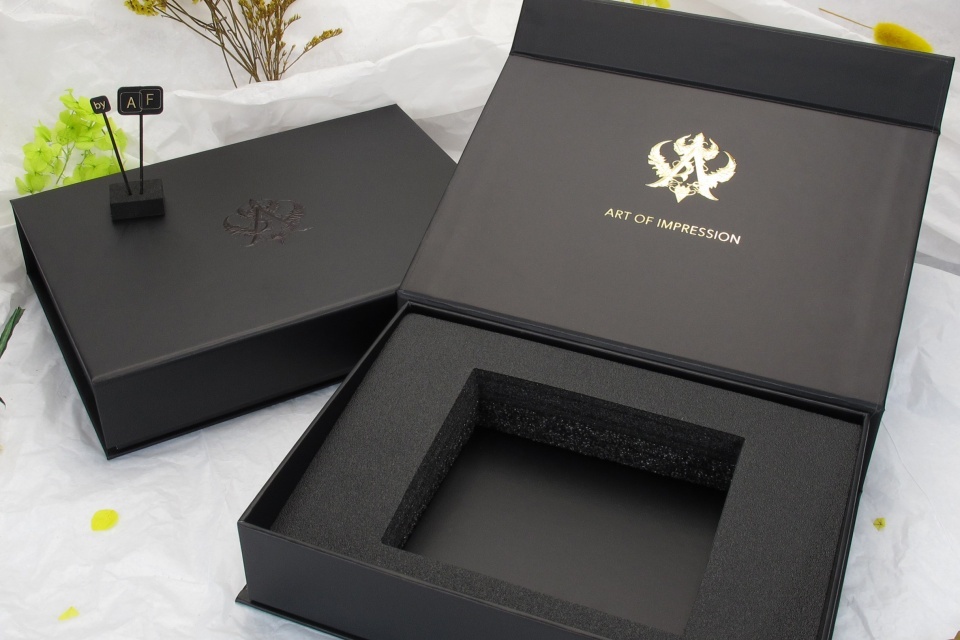Designing the Interior of Clamshell Boxes
Discover the essentials of designing clamshell box interiors. This guide covers materials, functionality, aesthetics, and current packaging design trends.
Summary
Designing the interior of clamshell boxes involves the intricate process of creating packaging solutions that are both aesthetically appealing and functionally robust. Clamshell boxes, characterized by their hinged design and transparency, are widely used in various industries, particularly for retail products, food, and pharmaceuticals, owing to their effectiveness in protecting items while providing visibility for consumers. Notably, the design process balances consumer demand for attractive packaging with the practical need for product safety during transport and storage, making it a critical consideration in modern packaging design.
The materials chosen for clamshell boxes, such as Polyethylene Terephthalate (PET) and Polyvinyl Chloride (PVC), play a significant role in both the aesthetic and functional aspects of the packaging. These materials are selected based on their properties, including durability, recyclability, and moisture resistance, which are crucial for ensuring product integrity. As sustainability becomes a growing concern, designers are increasingly turning to eco-friendly alternatives, like molded pulp and biodegradable plastics, which align with consumer preferences for environmentally responsible products.
Key design principles guide the creation of clamshell boxes, focusing on aesthetics, functionality, and multi-purpose use. While visual appeal is vital for capturing consumer attention, effective design must also address factors like tamper resistance and ease of opening. Moreover, innovative features, such as easy-open mechanisms and stackability, enhance usability and consumer satisfaction, promoting brand loyalty in a competitive market. However, the integration of technology in clamshell packaging, through elements like QR codes and NFC tags, marks a significant evolution, adding layers of interactivity that cater to the modern consumer’s expectations.
Controversies surrounding clamshell packaging often center on environmental impacts and waste generation associated with traditional plastic materials. As industries strive for more sustainable practices, the transition towards biodegradable and recyclable materials remains a prominent discussion point. The balance between maintaining effective product protection and reducing ecological footprints continues to challenge designers, prompting ongoing innovations in material selection and packaging design strategies.
Table of Contents
Materials Used
The construction of clamshell boxes involves a variety of materials, each selected for their specific properties and suitability for different applications. The most common materials used in clamshell packaging include plastics like PET (Polyethylene Terephthalate) and PVC (Polyvinyl Chloride), as well as molded fiber made from recycled paper or pulp.
Plastic Materials
Polyethylene Terephthalate (PET)
PET is widely recognized for its recyclability and is primarily used in the food and pharmaceutical industries due to its safety for food contact. It exhibits excellent moisture resistance, making it ideal for preserving the freshness of food items and protecting sensitive products like electronics. PET clamshells are known for their clarity and strength, which allows for effective display while providing structural support.
Polyvinyl Chloride (PVC)
PVC is another prevalent choice for clamshell packaging, known for its affordability and clarity. This thermoform plastic can be melted down and reused, which enhances its sustainability profile. PVC is suitable for food contact and is frequently utilized for packaging deli items, fruits, and vegetables, although it is not recommended for microwave use. Its robustness helps shield products from moisture and impact during transport.
Other Plastics
In addition to PET and PVC, other plastics such as polystyrene and ABS (Acrylonitrile Butadiene Styrene) are also utilized in clamshell designs, each offering unique benefits tailored to specific market needs. These materials contribute to the aesthetic appeal of the products they encase while ensuring durability and functionality.
Eco-Friendly Alternatives
With growing environmental concerns, eco-friendly materials like molded pulp made from recycled paper are increasingly favored. Molded pulp packaging is biodegradable and often used for fragile items, providing an alternative that reduces overall environmental impact.

Design Principles
Designing the interior of clamshell boxes involves a careful balance between aesthetic appeal and functionality. Key principles guide this design process to ensure that the packaging not only attracts consumers but also adequately protects the product it houses.
Aesthetic Value
Aesthetics play a critical role in packaging design, as they are essential for capturing consumers’ attention and effectively communicating the brand’s identity. Visually appealing packaging can create a lasting first impression, helping products stand out on crowded shelves. Designers often employ bold colors, innovative shapes, and clever cutouts to enhance the visual appeal of clamshell boxes. For instance, the Clever Cutouts trend utilizes strategic die-cut designs to reveal key aspects of the product, adding both intrigue and sophistication.
Functionality
While aesthetics are important, the primary purpose of packaging is to protect the product during shipping, storage, and handling. A well-designed clamshell box must fulfill this protective role without compromising its visual elements. This includes ensuring the integrity of the packaging structure, as well as considering factors such as tamper resistance and ease of opening. Effective packaging design must accommodate various shapes, sizes, and materials of products to ensure optimal protection.
Multi-Purpose Design
Another significant principle is the integration of multi-purpose functionality into the packaging design. Multi-purpose clamshell boxes can offer additional uses beyond mere product protection, such as transforming into display stands or repurposing for storage. This added value not only enhances the consumer experience but also fosters brand loyalty by appealing to consumers who appreciate thoughtfulness and utility in design.
Material Selection
The choice of packaging materials is also paramount in achieving a balance between aesthetics and functionality. Designers must select materials that align with the desired aesthetic while also meeting practical requirements for durability and protection. The use of eco-conscious materials can also resonate with consumers, reflecting a brand’s commitment to sustainability and enhancing its overall appeal. By adhering to these design principles, designers can create clamshell boxes that are not only visually striking but also practical and user-friendly, ultimately enhancing the product’s marketability.

Design Process
Overview
The design process for clamshell boxes involves several critical stages aimed at achieving both functionality and aesthetic appeal. Designers strive to balance various elements to create packaging solutions that meet consumer needs while also being visually appealing and practical.
Ideation
The initial phase, ideation, focuses on understanding the customer’s requirements through a comprehensive needs assessment. This process evaluates desired features, applications, shapes, and overall goals for the packaging. Designers also conduct market research to grasp the current landscape of packaging options, followed by brainstorming sessions to develop innovative concepts. Concept drawings and realistic renderings are created to visualize the proposed packaging.
Concept Review
Once initial designs are drafted, customer feedback is solicited during the concept review phase. Clients provide input on key design elements, including material choices, thickness, and coatings. This feedback is essential for refining the design to align with customer expectations and product needs.
Prototyping
The prototyping stage is critical in the design process, as it translates digital designs into physical models. Clamshell prototypes undergo rigorous testing to assess various factors such as snap fit, lid integrity, film seal, and tamper resistance. Prototypes are also tested in real-world shipping scenarios to ensure they can withstand typical challenges during transportation. This phase not only identifies potential design flaws early but also allows for the exploration of eco-friendly materials, contributing to sustainable packaging solutions.
Mold and Tooling
After finalizing the prototype, the design transitions to the mold and tooling phase. This involves creating a mold that is adjusted for production accuracy, ensuring that the final product can be manufactured efficiently and effectively. This phase is crucial for optimizing manufacturing processes and guaranteeing that the design specifications are met in the final product.
Iteration and Refinement
The design process is inherently iterative. Based on testing results and customer feedback, designers refine the packaging to ensure it excels in functionality, aesthetics, and sustainability. This cycle of evaluation and modification is essential for achieving a successful final product that resonates with consumers while addressing environmental considerations.
Ultimately, the design process for clamshell boxes is a multi-faceted journey that combines creative thinking, technical expertise, and customer collaboration to produce packaging that not only protects products but also enhances their market appeal.

Innovations in Clamshell Box Design
Sustainable Materials
Recent innovations in clamshell box design have increasingly focused on sustainability, with many manufacturers shifting towards eco-friendly materials. For instance, biodegradable alternatives such as Polylactic Acid (PLA), which is derived from renewable resources like corn starch, are becoming popular due to their ability to decompose more quickly in natural environments compared to traditional plastics. Additionally, the incorporation of post-consumer recycled (PCR) content into clamshell production is a growing trend that aids in creating a circular economy by reintroducing used plastics back into manufacturing processes.
Consumer-Friendly Features
Modern clamshell designs prioritize consumer convenience, incorporating features that enhance usability. Packaging is designed to be easy to open, handle, and store, which is crucial in today’s fast-paced world. Innovations such as resealable closures and ergonomic shapes not only improve user experience but also cater to diverse consumer needs, including those with physical limitations. Furthermore, transparency is a key design element, allowing visibility of the product while ensuring it is securely protected.
Stackability and Space Efficiency
The design of clamshell boxes has also evolved to optimize storage and transportation. Their stackable nature conserves vertical space, which is essential for retail and warehousing settings. This feature, combined with the ability of empty boxes to nest, significantly reduces the space needed for storage both during transport and in retail environments, thus minimizing storage expenses and enhancing overall space utilization.
Interactive and Engaging Packaging
Another notable innovation is the integration of technology into clamshell packaging. Features such as QR codes and NFC tags can provide consumers with access to digital content, enhancing their engagement with the product. Additionally, augmented reality (AR) capabilities enable consumers to interact with the product virtually through smartphone apps, creating a more immersive shopping experience.
Aesthetic Enhancements
Creativity in design is also vital, as innovative shapes and unique graphics can set products apart in a crowded market. Clamshell boxes are often adorned with eye-catching visuals that not only attract consumer attention but also reinforce brand recognition. Clear branding elements and informative labeling further enhance the packaging’s effectiveness by aiding consumer decision-making.

Trends in Clamshell Box Design
Evolving Aesthetics and Minimalism
The design of clamshell boxes is increasingly leaning towards minimalism, encapsulating the philosophy of “less is more” in packaging aesthetics. This trend emphasizes clean layouts and subtle design elements, allowing the product itself to take center stage without overwhelming the consumer with excessive graphics or text. Such a minimalist approach not only aligns with modern consumer preferences but also reduces material usage, thereby supporting sustainability initiatives.
Eco-Friendly Materials
As environmental consciousness grows, the demand for sustainable packaging solutions has surged. Many brands are transitioning away from traditional plastic clamshell packaging in favor of eco-friendly materials, such as biodegradable plastics and recycled content. This shift is driven by both consumer preference and regulatory pressures, with businesses striving to improve their eco-conscious image through clear labeling and responsible sourcing practices. The use of materials that can be recycled or that have a lower carbon footprint is becoming a critical consideration in packaging design.
Smart Packaging Integration
Smart packaging technologies are revolutionizing clamshell box design by incorporating features like QR codes and NFC (Near Field Communication). These enhancements transform the packaging from merely a protective casing to an interactive experience that can provide consumers with digital content such as instructional videos and authenticity verification. This integration not only improves consumer engagement but also adds value to the product being sold.
Personalization and Customization
Personalized packaging is gaining traction, as brands seek to create a deeper emotional connection with their customers. This includes custom shapes, sizes, and layouts, as well as the option for customers to include their names or special messages on the packaging. Such customization not only boosts brand loyalty but also caters to consumers’ desires for unique and memorable shopping experiences.
Multi-Purpose Functionality
There is a growing trend towards designing clamshell boxes that serve multiple purposes. This could mean packaging that can be repurposed for storage, transformed into display stands, or reused in various ways by the consumer. Multi-purpose designs enhance the overall user experience and reinforce brand loyalty while promoting sustainability by reducing waste through the additional functionality.
Enhanced Usability Features
Finally, current trends in clamshell box design emphasize user-friendly features. Innovations such as easy-open mechanisms, resealable closures, and ergonomic shapes are being incorporated to improve the usability of these packages. Such enhancements cater to consumer convenience, which is a key consideration in packaging design today.
Case Studies
Impact of Clamshell Packaging on Sales
A notable study conducted by Clemson University evaluated the effectiveness of different packaging types in a retail environment. Participants, equipped with eye-tracking glasses, were placed in a mock-retail setting to choose between products packaged in plastic clamshells and paperboard boxes. The results revealed a significant preference for plastic clamshell packaging, which facilitated product sales by 402% more than its paperboard counterparts. This finding highlights the importance of visibility in packaging design, suggesting that clear packaging can enhance consumer interest and drive sales.
Environmental Considerations in Packaging Choices
In a recent case, a start-up faced a dilemma when selecting packaging for a product launch, weighing the environmental implications against consumer preferences. The company aimed to balance ecological responsibility with the need for effective sales facilitation through packaging. The decision ultimately leaned towards clamshell packaging, which not only appealed to consumer convenience but also addressed environmental concerns by allowing for the exploration of eco-friendly materials. This case underscores the growing trend among brands to adopt packaging solutions that align with sustainability while still fulfilling commercial objectives.
Prototyping for Optimal Design
The iterative process of prototyping was illustrated in a project undertaken by Ecobliss, where the emphasis was placed on developing packaging that is both innovative and sustainable. Prototypes were created to gather consumer feedback, ensuring the design resonated with the target audience. This method not only helped identify design flaws early in the process, saving costs on large-scale production, but also facilitated the experimentation with sustainable materials, thereby reducing the environmental impact of packaging solutions. The focus on prototyping reflects the industry’s shift towards a more consumer-centric approach in packaging design, emphasizing the significance of functional and aesthetic considerations in creating successful clamshell packaging.
The Balance Between Aesthetics and Functionality
A successful packaging case study demonstrates the need for a delicate balance between aesthetic appeal and functionality. Brands have recognized that visually striking packaging can create a lasting first impression and enhance product visibility on shelves. However, the primary function of protecting the product during shipping and handling remains crucial. An example of this balance is found in clamshell packaging, which is designed to securely encase products while providing a clear view of the contents. This dual focus on aesthetics and functionality not only enhances the consumer experience but also supports brand identity.
Cost Implications
When designing the interior of clamshell boxes, cost implications are a crucial consideration that can significantly affect the overall packaging budget. Various factors play a role in determining the costs associated with clamshell packaging, including material selection, size, complexity, and order quantities.
Material Selection
The choice of materials is a primary driver of packaging costs. For instance, while materials like PVC are known for their clarity and durability, they can be more cost-effective compared to alternatives, though they may not always provide the best long-term value. Investing in more durable and visually appealing materials can lead to enhanced customer satisfaction and loyalty, ultimately offsetting the higher initial costs.
Size and Complexity
The dimensions and design complexity of clamshell boxes directly impact production expenses. Simple, one-piece designs typically incur lower costs compared to more intricate, multi-piece packaging solutions. For example, a small, straightforward box might cost around $0.50 per unit, while a larger, more complex clamshell could reach costs of $2.00 per unit. Thus, careful planning in size and design is essential to control costs effectively.
Order Quantity
The quantity of clamshell boxes ordered also significantly influences unit pricing. Bulk purchasing can reduce costs per unit, making larger orders more economical. For instance, ordering 1,000 units of a simple box may lower the unit price from $0.50 to $0.40, and even further to $0.30 for 10,000 units. Therefore, businesses should consider their inventory needs and potential savings through bulk orders when planning their packaging budget.
Additional Cost Considerations
Beyond material and design, other factors contribute to the overall cost of clamshell packaging. These include shipping and distribution expenses, which can vary based on the weight and size of the packaging, as heavier materials typically incur higher shipping costs. Furthermore, environmental impact assessments, such as recycling and disposal costs, should be integrated into the cost analysis to ensure sustainable practices are accounted for.
By analyzing these aspects, companies can make informed decisions that balance quality, functionality, and cost-effectiveness in their clamshell packaging solutions.
